Lactarius deliciosus (Рујница, a.k.a. Бриковка,Боровка)
The Saffron Milk Cap (Lactarius deliciosus) is one of the strangest mushrooms I've encountered and is a typical example of how certain myths about how edible/poisonous mushrooms can be distinguished are wrong.
Common folks have these beliefs about how one differs edibles from poisonous that can lead up to 1) missing out on an excellent edible (best case scenario),or 2) confusing a poisonous mushroom and a slow,painful death (worst case scenario).
To name a few, people say if maggots don't infest a mushroom or slugs don't nibble it then it is poisonous (needless to say humans and maggots/slugs don't have the same digestive system), bright colored mushrooms are poisonous (again,not true),if you bite a raw mushroom and it's bitter or burns it's poisonous and if not it's good to eat (WRONG!!!), mushrooms that change to darker color when cut are poisonous (Lactarius deliciosus is a perfect example of how wrong that is), or if animals eat it than so can we (the poisonous Amanita Muscaria is eaten regularly by foxes,wolves etc in the woods and yet it is highly toxic to humans).
These are all folk tales that have nothing to do with reality.
To be honest,if I saw a mushroom that has dark green/dark blue "bruises" on it i'd be skeptical of it too.
So i was very surprised when one time,some 15 or so years ago, in Delcevo at my uncle's house he treated us with the Saffron Milk Caps fried in a simple covering of flour and salt.
My dad and I hesitated at first, because as you can see from the images below, this is not a very appealing mushroom and those big green spots on an orange body did make us raise our eyebrows,not to mention the suspicious odor of the mushroom's liquid when frying.
But my uncle said he's been eating these mushrooms since he was a kid so eventually we were persuaded to give it a try.
And boy,was it good.
One thing this mushroom differs from the rest is that it doesn't "melt" when fried,and it doesn't get much softer when fried either.
Like it's color,it's texture is like a carrot and it keeps it's size and hardness even after it's fried.
This makes it ideal for a crispy snack that goes well with beer,for dipping in dips or just as a replacement for nachos and chips.
When cut,this mushroom releases a saffron/orange color "milk" which turns green/dark blue after some time exposed to air (hence the green stains).
The milk also colors the cooking oil in saffron/orange color as well, so after cooking them don't be surprised when seeing this,perfectly normal.
It is found in large quantities in coniferous forests throughout November and early December,making it one of the last mushrooms of the year.
My dad pickles them for a "meze" with some "rakija", while i serve them deep fried in flour and salt as a beer snack.
I've foraged around 9 kg so far from the nearby pinewoods (this weekend I'll go foraging again with a friend of mine that discovered these beauties just last week at my house,he's now a believer) because time runs out and within a couple of weeks they'll be completely gone.
These are one of the oldest recorded edible mushrooms in history (a fresco in the Roman town of Herculaneum depicts Lactarius deliciosus and is one of the earliest pieces of art to illustrate a fungus) and is regarded as a delicacy in Catalan cuisine.
It is often used there in potato and meat stews, baked in an oven with some garlic,olive oil and parsley,or meat dishes.
Lactarius deliciosus has a carrot orange cap which is convex to vase shaped, inrolled when young,often with darker orange lines in the form of concentric circles.
The cap is sticky and viscid when wet, but is often dry.
It has crowded decurrent gills and a squat orange stipe which is often hollow.
Again,it's worth to mention that foraging these mushrooms from polluted soil like waste areas is not recommended because the mushroom will contain big amount of heavy metals.
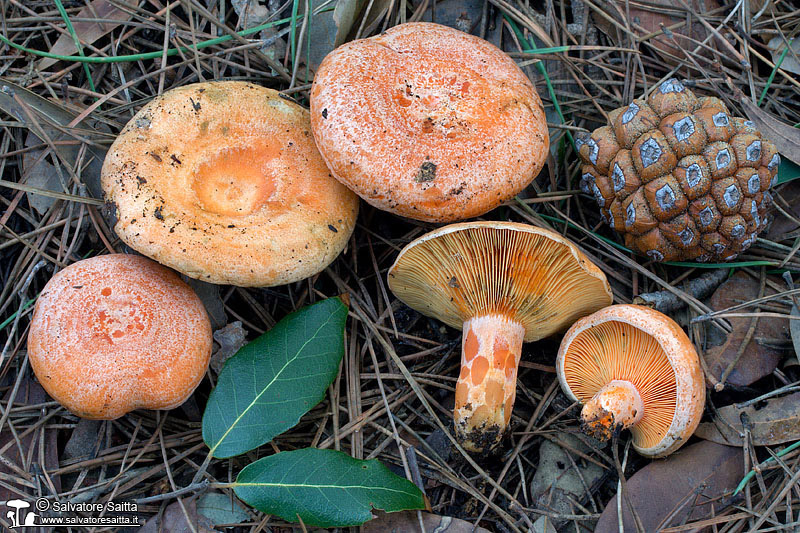



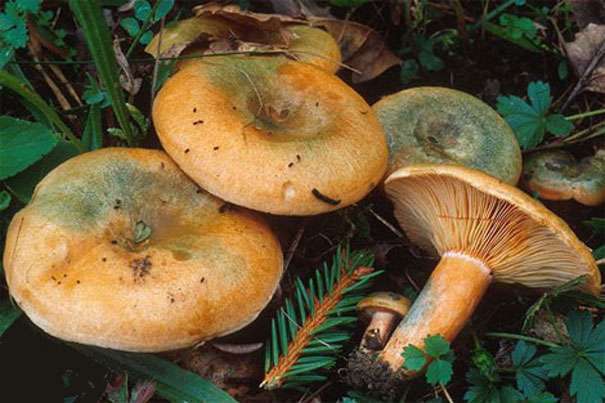


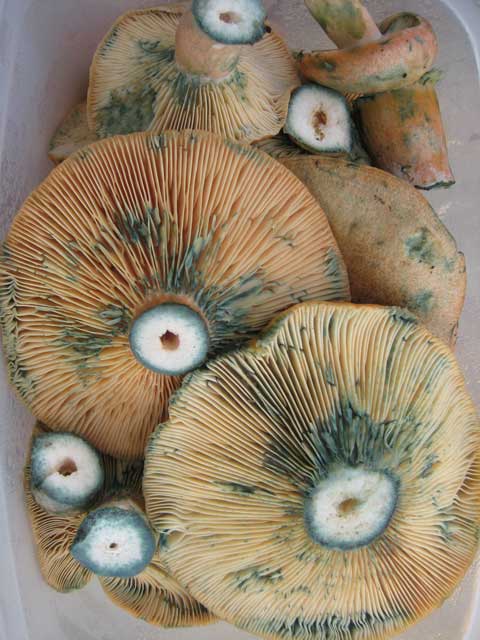
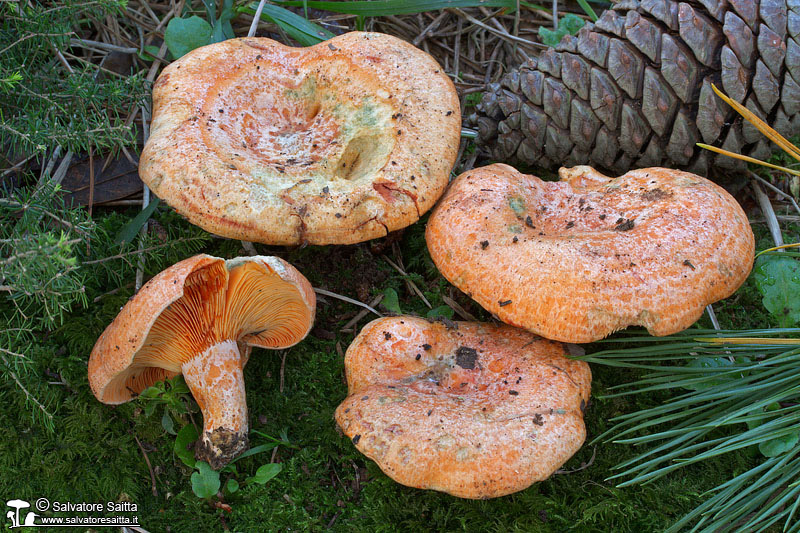
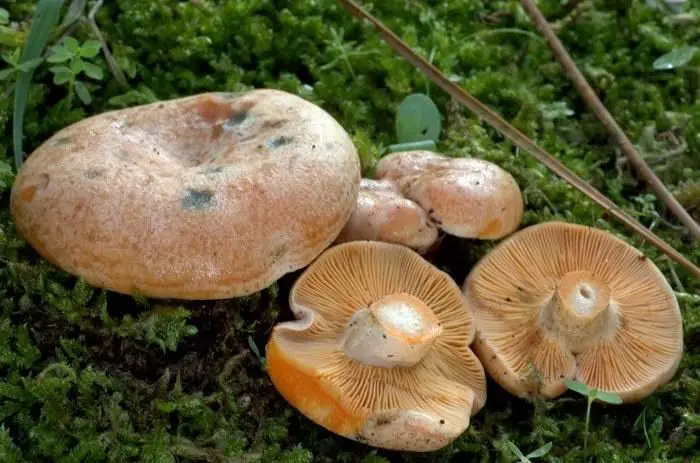

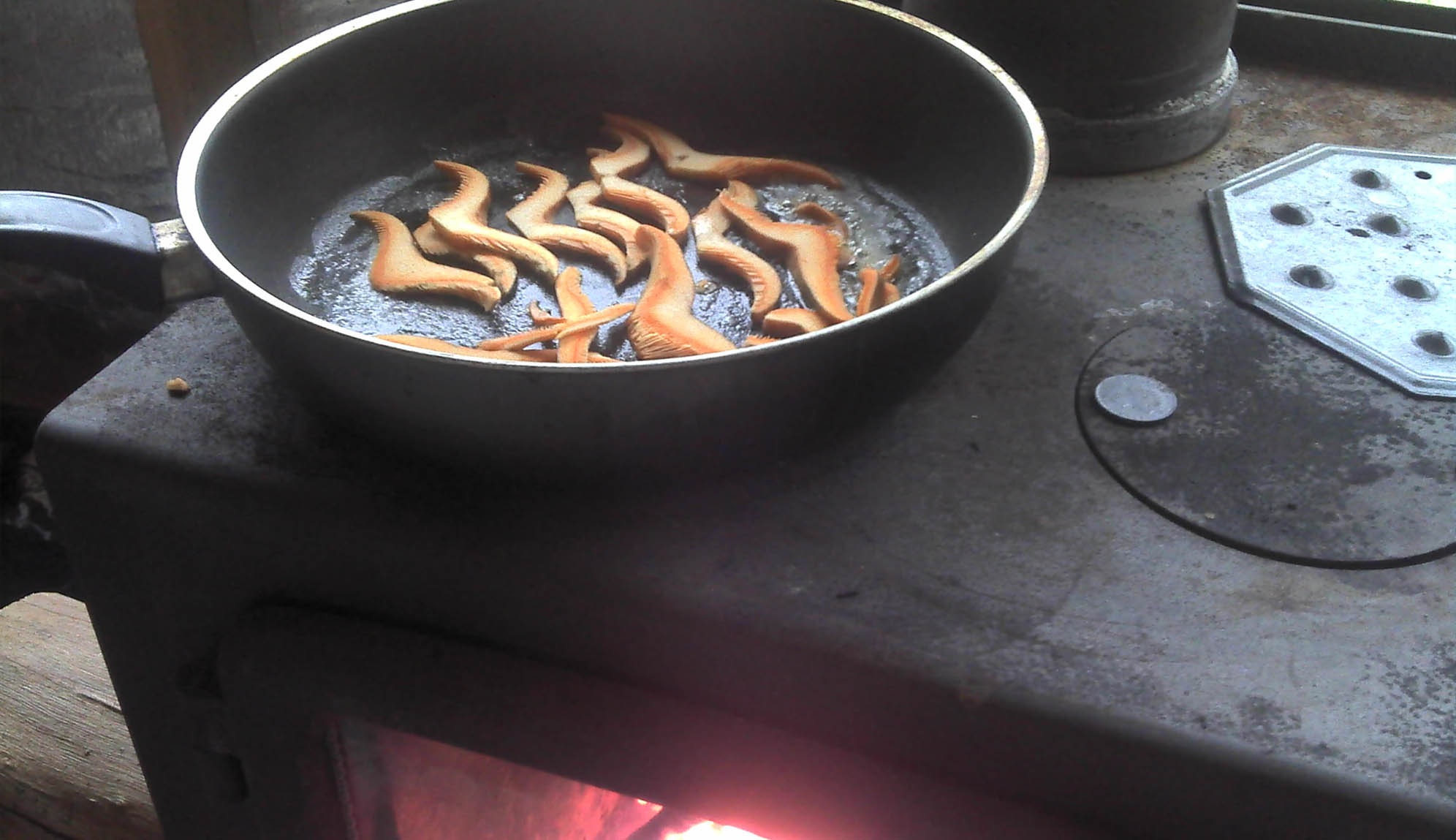
The only lookalikes in Macedonia that are often found growing next to each other are Lactarius deterrimus and Lactarius sanguifluus,which are also good edibles, so no danger of poisoning:
Lactarius deterrimus:

Lactarius sanguifluus:
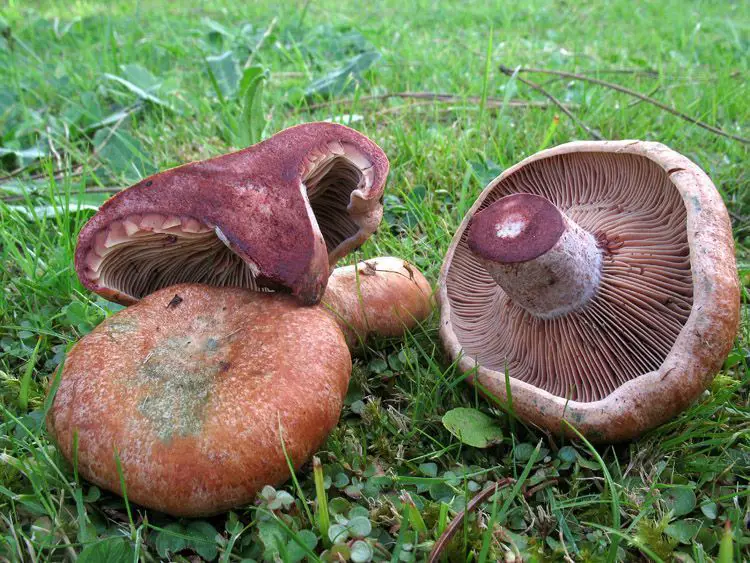
Close comparison between L.deliciosus and L.sanguifluus:

And of course, a couple of recipes to wrap it up:
The Saffron Milk Cap (Lactarius deliciosus) is one of the strangest mushrooms I've encountered and is a typical example of how certain myths about how edible/poisonous mushrooms can be distinguished are wrong.
Common folks have these beliefs about how one differs edibles from poisonous that can lead up to 1) missing out on an excellent edible (best case scenario),or 2) confusing a poisonous mushroom and a slow,painful death (worst case scenario).
To name a few, people say if maggots don't infest a mushroom or slugs don't nibble it then it is poisonous (needless to say humans and maggots/slugs don't have the same digestive system), bright colored mushrooms are poisonous (again,not true),if you bite a raw mushroom and it's bitter or burns it's poisonous and if not it's good to eat (WRONG!!!), mushrooms that change to darker color when cut are poisonous (Lactarius deliciosus is a perfect example of how wrong that is), or if animals eat it than so can we (the poisonous Amanita Muscaria is eaten regularly by foxes,wolves etc in the woods and yet it is highly toxic to humans).
These are all folk tales that have nothing to do with reality.
To be honest,if I saw a mushroom that has dark green/dark blue "bruises" on it i'd be skeptical of it too.
So i was very surprised when one time,some 15 or so years ago, in Delcevo at my uncle's house he treated us with the Saffron Milk Caps fried in a simple covering of flour and salt.
My dad and I hesitated at first, because as you can see from the images below, this is not a very appealing mushroom and those big green spots on an orange body did make us raise our eyebrows,not to mention the suspicious odor of the mushroom's liquid when frying.
But my uncle said he's been eating these mushrooms since he was a kid so eventually we were persuaded to give it a try.
And boy,was it good.
One thing this mushroom differs from the rest is that it doesn't "melt" when fried,and it doesn't get much softer when fried either.
Like it's color,it's texture is like a carrot and it keeps it's size and hardness even after it's fried.
This makes it ideal for a crispy snack that goes well with beer,for dipping in dips or just as a replacement for nachos and chips.
When cut,this mushroom releases a saffron/orange color "milk" which turns green/dark blue after some time exposed to air (hence the green stains).
The milk also colors the cooking oil in saffron/orange color as well, so after cooking them don't be surprised when seeing this,perfectly normal.
It is found in large quantities in coniferous forests throughout November and early December,making it one of the last mushrooms of the year.
My dad pickles them for a "meze" with some "rakija", while i serve them deep fried in flour and salt as a beer snack.
I've foraged around 9 kg so far from the nearby pinewoods (this weekend I'll go foraging again with a friend of mine that discovered these beauties just last week at my house,he's now a believer) because time runs out and within a couple of weeks they'll be completely gone.
These are one of the oldest recorded edible mushrooms in history (a fresco in the Roman town of Herculaneum depicts Lactarius deliciosus and is one of the earliest pieces of art to illustrate a fungus) and is regarded as a delicacy in Catalan cuisine.
It is often used there in potato and meat stews, baked in an oven with some garlic,olive oil and parsley,or meat dishes.
Lactarius deliciosus has a carrot orange cap which is convex to vase shaped, inrolled when young,often with darker orange lines in the form of concentric circles.
The cap is sticky and viscid when wet, but is often dry.
It has crowded decurrent gills and a squat orange stipe which is often hollow.
Again,it's worth to mention that foraging these mushrooms from polluted soil like waste areas is not recommended because the mushroom will contain big amount of heavy metals.












The only lookalikes in Macedonia that are often found growing next to each other are Lactarius deterrimus and Lactarius sanguifluus,which are also good edibles, so no danger of poisoning:
Lactarius deterrimus:

Lactarius sanguifluus:

Close comparison between L.deliciosus and L.sanguifluus:

And of course, a couple of recipes to wrap it up:




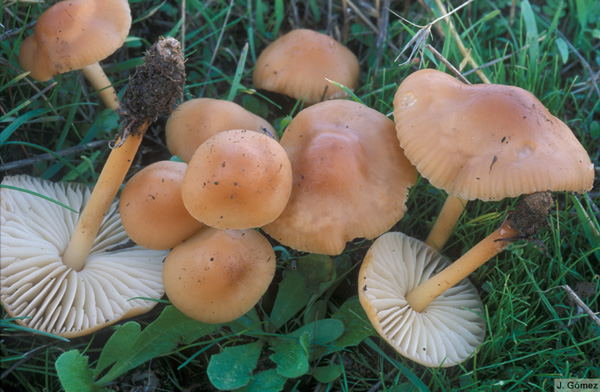

.jpg)
_Fr_112385.jpg)
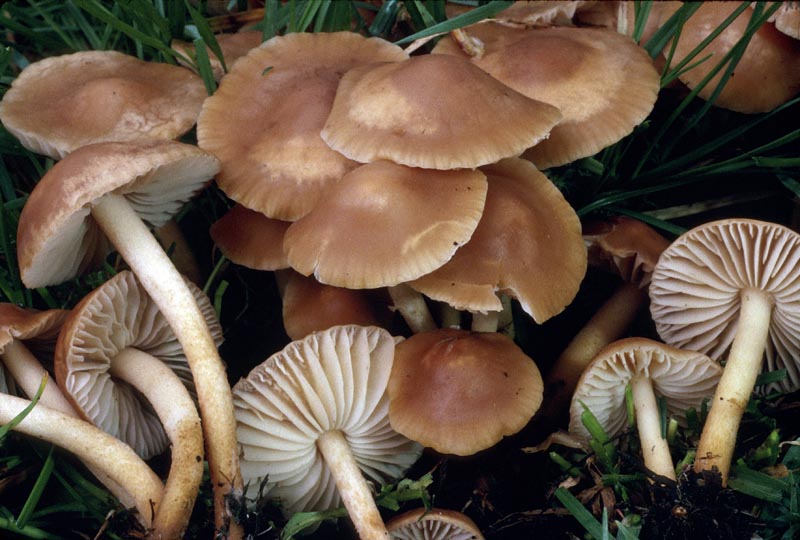
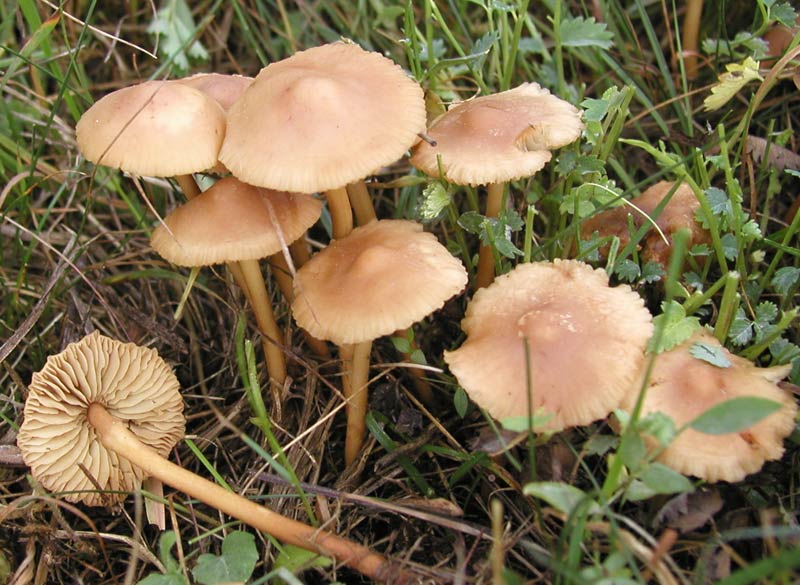
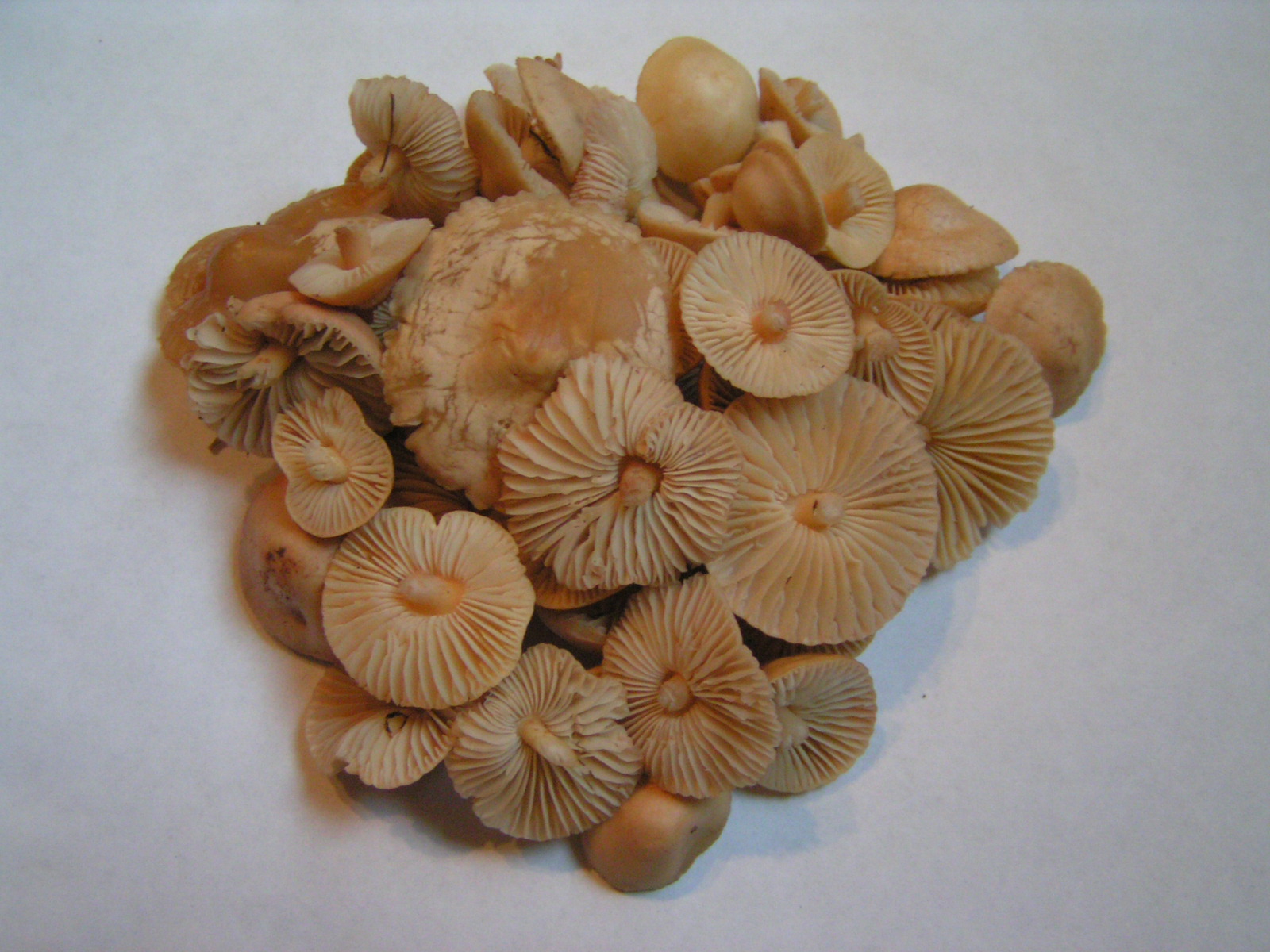

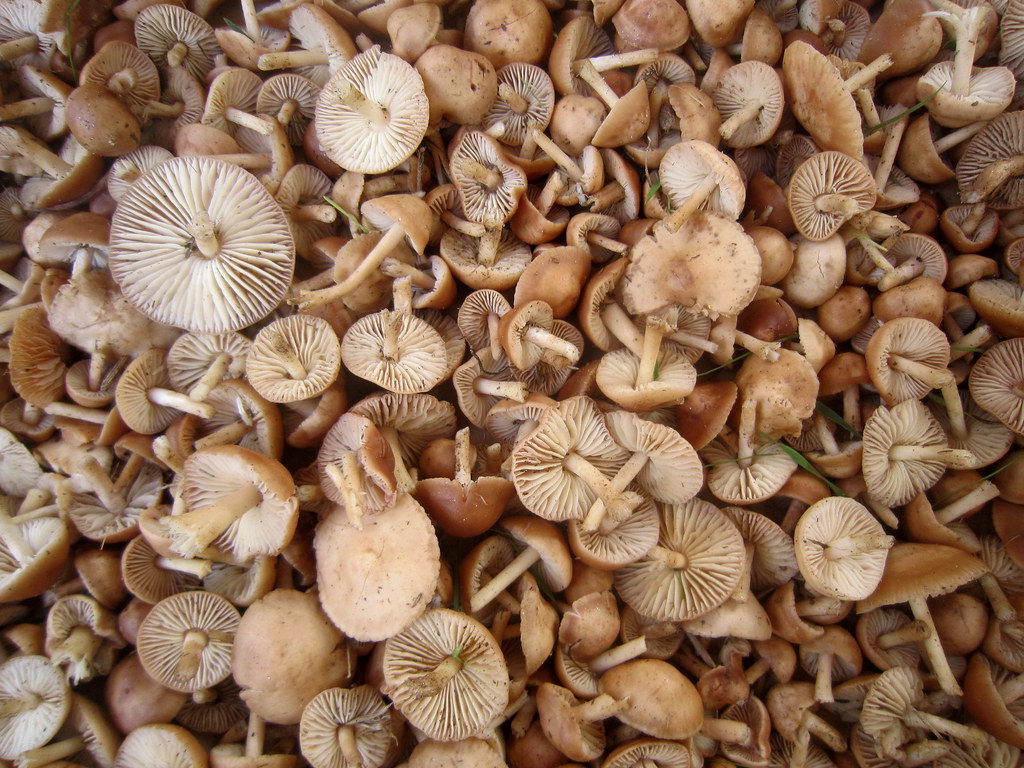

Comment